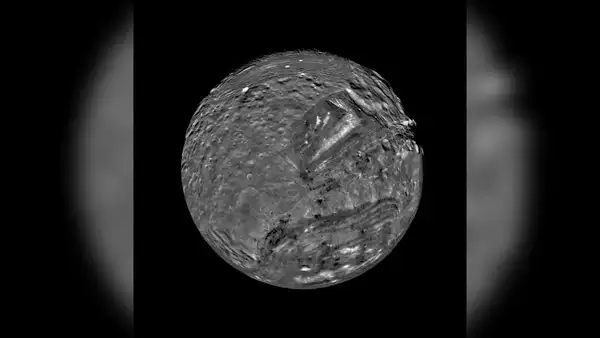By The Nexus Gazette.
19th August, 2024.
In a groundbreaking discovery, NASA’s James Webb Space Telescope has revealed compelling evidence that Uranus, the seventh planet from the Sun, may harbor an oceanic world beneath its icy exterior. This significant finding offers new insights into the outer solar system, potentially reshaping our understanding of planetary science.
The revelation suggests that beneath Uranus’ thick layer of ice lies a vast ocean, a discovery that opens up intriguing possibilities about the planet’s composition and the potential for habitability in the outer solar system. The James Webb Space Telescope, known for its advanced observational capabilities, has provided astronomers with data that hint at the presence of liquid water beneath Uranus’ frigid surface.
In a related discovery, astronomers using the Webb Telescope have found that Ariel, one of Uranus’ moons, possesses some of the most carbon dioxide-rich deposits in the solar system. Ariel’s surface is coated with an unusually high amount of carbon dioxide ice, a surprising find given the extreme distance from the Sun, where carbon dioxide should typically sublimate into gas and escape into space.

However, the new evidence suggests that this carbon dioxide may originate from within Ariel itself, possibly from a subsurface ocean. This buried water ocean could be interacting with the moon’s surface, leading to the carbon dioxide deposits observed by the Webb Telescope.
These discoveries are more than just intriguing; they represent a significant advancement in our understanding of the outer solar system’s planetary bodies. The possibility of an ocean beneath Uranus’ icy surface raises questions about the planet’s geology and the potential for other such oceanic worlds in the distant reaches of our solar system.
For Ariel, the presence of a subsurface ocean could mean that this small moon has a dynamic interior, with potential geothermal activity that could influence its surface environment. This finding positions Ariel as a key target for future explorations, as scientists seek to understand the moon’s geological history and the mechanisms driving its unique surface composition.

NASA’s James Webb Space Telescope continues to push the boundaries of space exploration, providing unprecedented insights into distant celestial bodies. These latest discoveries regarding Uranus and its moon Ariel underscore the importance of continued observation and study of our solar system’s outer planets and their moons.
The findings not only enhance our knowledge of Uranus but also set the stage for future missions that could delve deeper into the mysteries of these distant worlds. The prospect of an ocean hidden beneath Uranus’ surface adds a new layer of excitement to the exploration of our solar system, reminding us that there is still much to learn about the planets and moons that orbit the Sun.
Resources:
3.https://www.physics-astronomy.com/ocean-world-around-uranus-webb-telescope-makes-exciting-discovery/